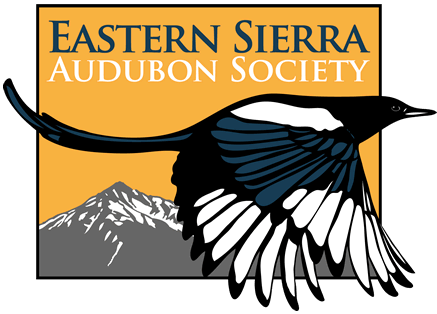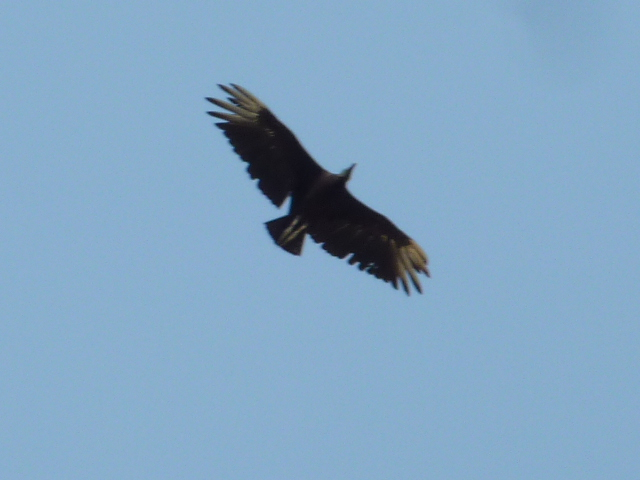
Black Vulture, a first for Inyo County
photo by Jon Dunn
This was yet another exciting fall migration period for the Eastern Sierra. At the top of the list were four species considered so rare in the state that their acceptance must be reviewed by the California Bird Records Committee. All were well photographed making the reviews a little easier. First was a Black Vulture, a first record for Inyo County and 5th record for the state, if accepted by the Committee. Jon Dunn saw the bird 5 August soaring with Turkey Vultures over Hwy 395 just north of Lone Pine. He immediately began calling locals and taking images of the bird soaring directly over his head. A number of birders headed to Lone Pine and spent hours, then a couple of days, without relocating the bird.
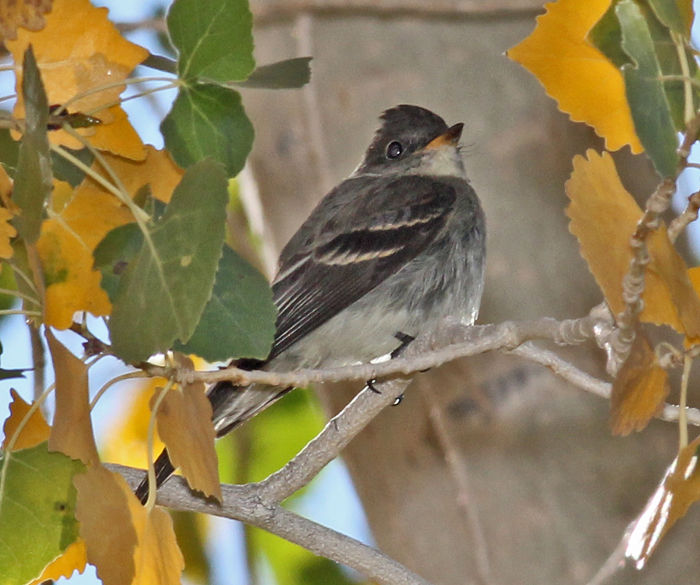
Eastern Wood-Pewee, photo by Tom Heindel
The final two CBRC review listed species were from the southeast tip of Inyo County in Shoshone. A Wood Thrush came to the pond in Len Warren’s yard on 25 October and lingered to 8 November allowing a large number of birders the opportunity to add another tick to their Inyo County list. Len took images from the first look and got the word out.If the bird is accepted by the Committee it will be the third record for Inyo County and the 27th for California.
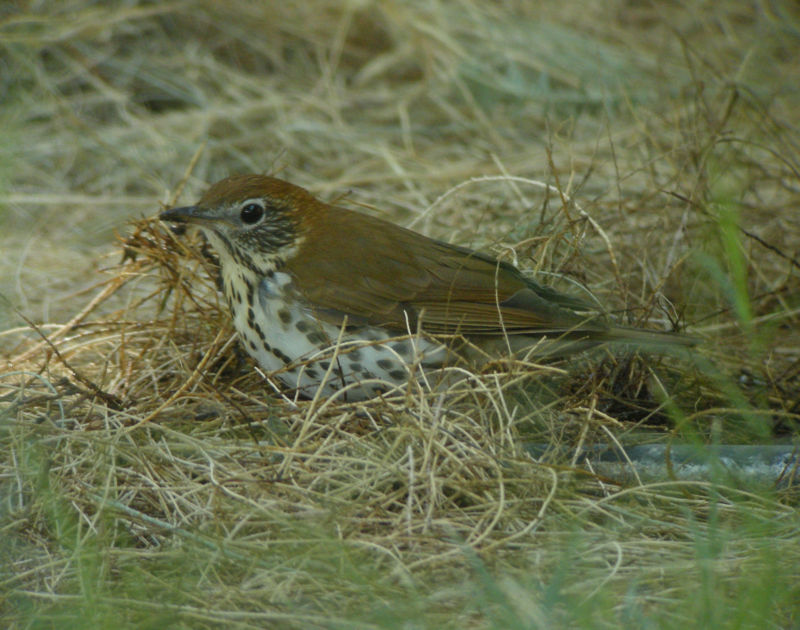
Wood Thrush, Shoshone, photo by Curtis Marantz
Before the Wood Thrush departed, Len found a Dusky-capped Flycatcher in his yard 5 November. He took video and stills and got the word out but the flycatcher was not re-found. If accepted by the Committee, this will be the fourth record for Inyo County and the 85th for California. This event is a perfect example of why it is crucial to collect evidence to support a claim of an unexpected species. Len is well-known to the Inyo County birding community but only to a few people outside the county. A single observer of a bird species that is not an easy identification, and is not re-found by others, is a difficult record to evaluate. With unequivocal images, Len proved to all, currently and in a century, that a Dusky-capped Flycatcher occurred at this location on this date.
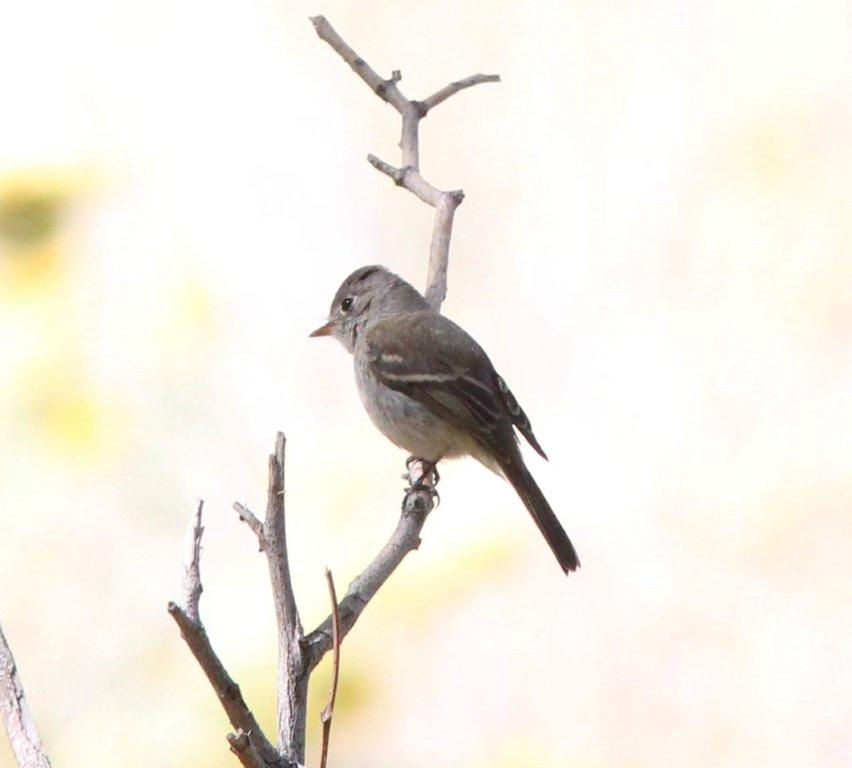
Least Flycatcher
photo by Debby Parker
The Bishop area served to help balance the county’s fall records with Birchim Canyon adding Tennessee Warbler (J&DP), Chestnut-sided Warbler (J&DP), and Summer Tanager (J&DP), and Round Valley gave up a Least Flycatcher (J&DP). Owens Valley’s watering holes, Tinemaha Reservoir and Owens Lake, yielded Arctic Tern (JLD), American Golden-Plover (KH-L), Sanderlings (JLD, KH-L), Semipalmated Sandpiper (JLD), and Sabine’s Gulls (KH-L).
Saline Valley reminded birders that it is worth visiting by adding an immature Northern Goshawk, American Redstart, Clay-colored Sparrow, and White-throated Sparrow, all reported by REM.

Dickcissel
Photo by Debbie House
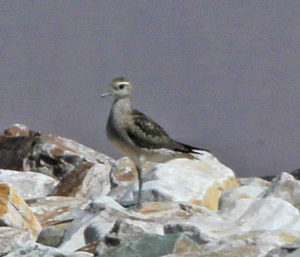
American Golden Plover
photo by Jo Heindel
The fall seasonal report is more complete because of the extraordinary effort that the following observers gave to validate sightings. Of the 65 species submitted to the editors of North American Birds in the Fall Report, 36 were supported with photographs! Our public and personal gratitude goes to: KB-Ken Burton, ADeM-Al DeMartini, JLD-Jon Dunn, KH-L-Kelli Levinson, DJH-Debbie House, C&RH-Chris & Rosie Howard, CAM-Curtis Marantz, REM-Bob Maurer, Jr., J&DP-Jim & Debby Parker, LR-Lynette Royce, and LSW-Len Warren, plus many others not cited in this article.
Tags: flycatcher, hawk, lark, plover, sandpiper, sparrow, thrush, vulture, warbler, wren